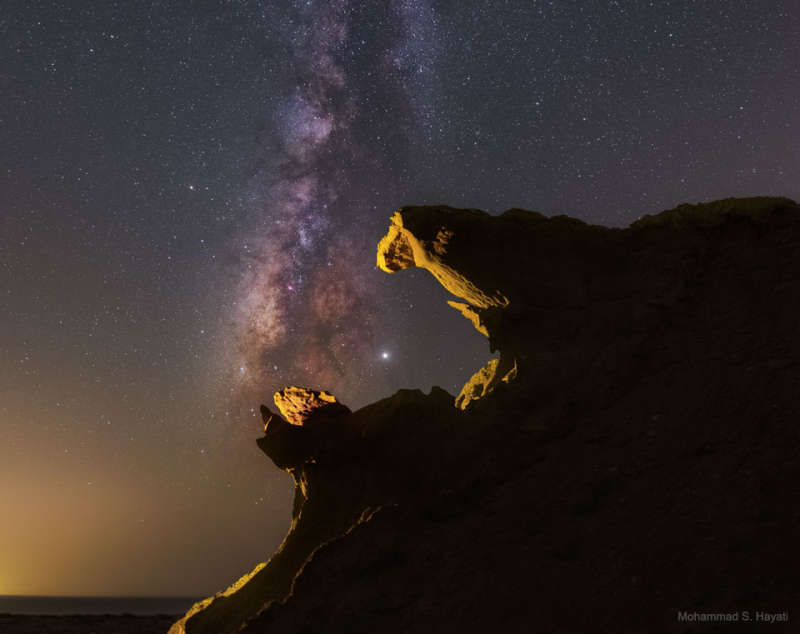Credit & Copyright: Mohammad S. Hayati
Explanation:
This is a good month to see Jupiter.
To find
our Solar System's largest planet in your sky,
look toward the southeast just after sunset --
Jupiter should be the brightest object in that part of the sky.
If you have a binoculars or a small telescope, you should be able to
see Jupiter's
four brightest
moons right nearby,
and possibly some cloud bands.
The featured image was taken about a month ago from the
Persian Gulf.
The image shows Jupiter just to the right of the nearly vertical band of the central
disk of our
Milky Way Galaxy.
The unnamed rock formations appear in projection like the jaws of a giant monster
ready to engulf the Jovian giant.
When you
see Jupiter,
it may be interesting to know that NASA's robotic
Juno
spacecraft is simultaneously
visiting and studying the
giant planet.
Saturn is also visible this month, and although it is
nearby to Jupiter, it is not as bright.
1999 2000 2001 2002 2003 2004 2005 2006 2007 2008 2009 2010 2011 2012 2013 2014 2015 2016 2017 2018 2019 2020 2021 2022 2023 2024 2025 |
Yanvar' Fevral' Mart Aprel' Mai Iyun' Iyul' Avgust Sentyabr' Oktyabr' Noyabr' Dekabr' |
NASA Web Site Statements, Warnings, and Disclaimers
NASA Official: Jay Norris. Specific rights apply.
A service of: LHEA at NASA / GSFC
& Michigan Tech. U.
|
Publikacii s klyuchevymi slovami:
Yupiter - Mlechnyi Put'
Publikacii so slovami: Yupiter - Mlechnyi Put' | |
Sm. takzhe:
Vse publikacii na tu zhe temu >> | |
